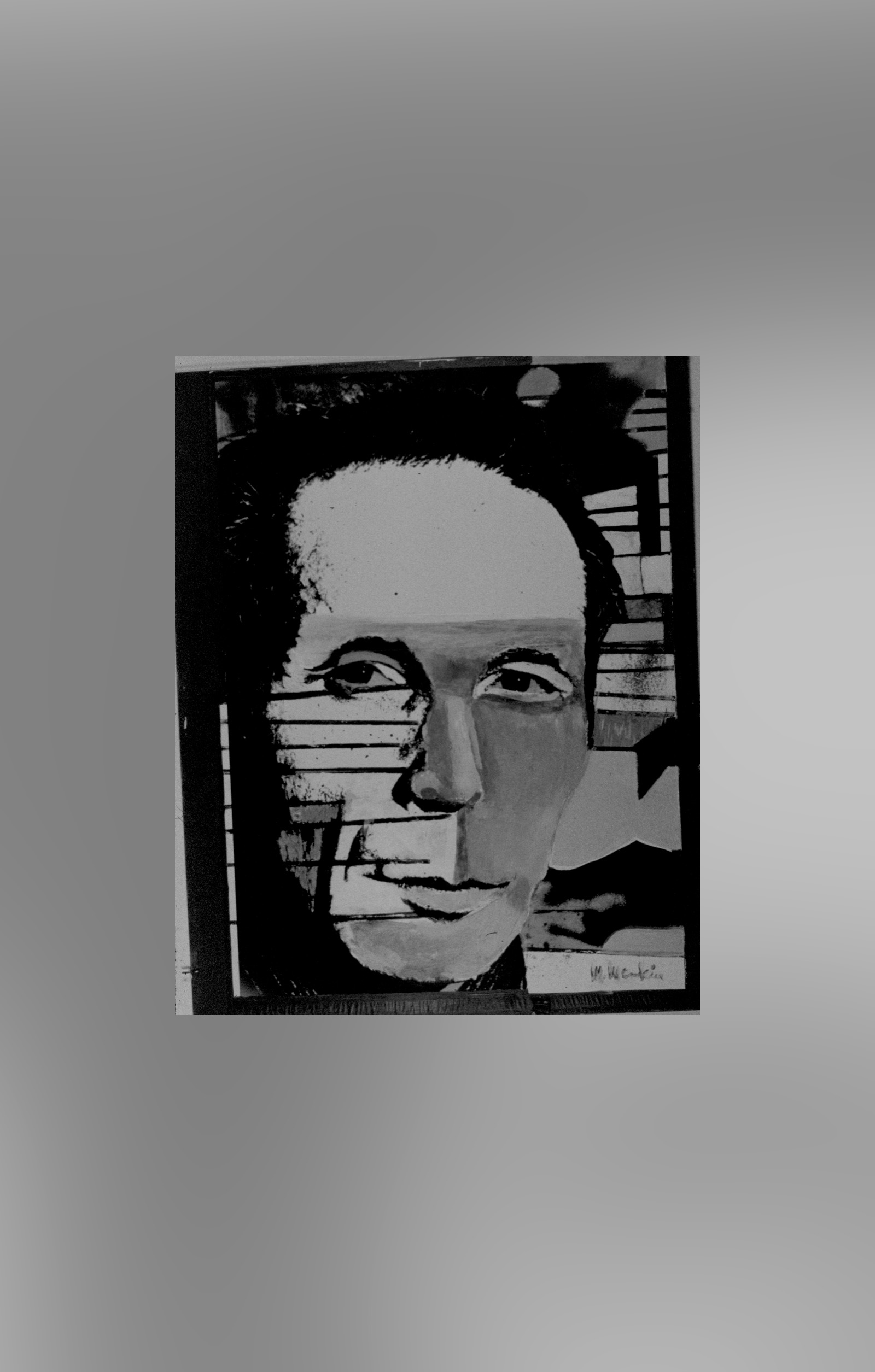Mel Menkin, 1919-2010
Biography
Exhibits – Clippings
An Artist’s Profile
“From the dazzling array of colors to the startling and bizarre visual formations found at random, a compelling imagery emerges, resonating with echoes of 20th Century painting ideas.”
Mel Menkin 1995, Randomness Exhibit, Century City Gallery.
An American artist, Mel Menkin’s artistic journey began at The New Bauhaus (now The Chicago Institute of Design), from 1939-1941. This unique art education, led by László Moholy-Nagy, developed a curriculum that required experimentation with every conceivable material. Such is manifest in his earliest works to his works in later years.
After moving to San Francisco in 1941, he became immersed in the Abstract Expressionist Movement, and simultaneously was a US Merchant Marine serving the war effort, where he witnessed the horrors of World War II. While on leave, he painted anti-war pieces chosen for several art shows at the height of the Expressionist Movement.
Even in these emotional pieces, the avant-garde Bauhaus influence persisted in his works. His use of mixed media and hints of surrealism are notable. In the 1946 2nd Annual Palace of the Legion of Honors show, Menkin exhibited The Trap in a juried show with luminaries such as Dali, Max Weber, Yves Tanguy, Rufino Tamayo, Ben Shahn, Ad Reinhardt, Mark Rothko, Georgia O’Keeffe, Matta, Edward Hopper, George Grosz, Lyonel Feininger, Max Ernst, Salvador Dali, Paul Clemens, Paul Cadmus, and Marc Chagall.
A California Artist
Throughout his career, he retained his expressionist style as he devoured new technology, with applications to his photography and water colors. His innovation was on display at the 1978 Laurel Gallery, Los Angeles, California, Xerography In LA, and in the 1994 Galerie Toner, Paris, France Desperation Of The Alphabet. However, his photography played the most prominent role, emanating from images in his dark room.
Menkin’s eye documented aspects of the state’s unique structures, partially demolished construction sites, landscapes, blemished cars, and culture. In his later years, he became Intensely passionate about California’s car culture, but not the way a consumer or enthusiast loves a car. He only paid homage to cars that were marred and on their way to the great metal “wasteland”, or in a state of rehabilitation. Cars became his light and color pallet.
“But his images reflect much more”, says Los Angeles Times art writer Nancy Kapitanoff in her 1995 review of the Randomness show at Century City.
As Menkin stated: “My interest in our ubiquitous car culture is to document an alternative experience.
I present a glimpse into the process of rebuilding the ugly scars of vehicle damage and forestalling the eventual wrecking yard destiny. Strong graphic/expressive content emerges from the unique color combinations and surprising shapes which stimulate our imagination with echoes from our rich visual legacy. Might be an Oceanic or African mask, a ceremonial fragment, outsider art by the self-taught,
or the sophisticated diversity and inventiveness of many 20th-century artists.”
While teaching art, photography, calligraphy and advertising at the secondary level for 30 years, Menkin inspired the lives of many students.
David Nakivell of the Ventura County Star saw it this way: “His world of images is ever present, for he finds treasure where others find remorse.”


